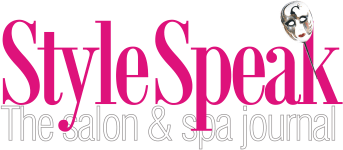As Gen Z starts becoming a primary consumer of beauty products and services, it is essential to understand their choices and views in cosmetics and beauty services.
It seems that Gen Z is the talk of the town right now. Every other new beauty launch or product is aimed towards this novel market, hoping to predict their tastes and preferences. But Gen Z is as different as they are diverse. Born between 1997 and 2012, they range from new teenagers taking their first, hesitant steps into the realm of beauty, to adolescents and young adults newly entering the workforce.Perhaps what defines Generation Z is simply how plugged in they are to the world around them. With their formative years colliding square with the peak of the digital era, Gen Z has had their finger on the pulse of the internet before they even lost their baby teeth. This means that their tastes and preferences are not limited to what they see their mothers and sisters are doing. Instead, their muses come from across time and space. Some zoomers demand for international trends, inspired by social media phenomena from across the world, while others look to India’s past to take inspiration from the golden age of Bollywood. Yet others ask for opportunities for self-expression, while some choose ‘clean girl’ or subtle beauty looks.
Instead of trying to encapsulate the vast expanse of Gen Z likes and preferences under one umbrella, StyleSpeak helps you break down how exactly Gen Z consumers differ from the previous generations, allowing professionals to cater directly to their tastes and preferences.
1.Beauty as healthcare
Did Gen Z invent the skincare routine? Perhaps not, but they definitely did popularize it. This young crowd has moved beyond simply looking better but instead focused on feeling better, working on skin and hair health before they can focus on beauty. Cue an increased focus on skincare, skincare ingredients, and hair care. Extravagant multi-step skincare routines, skincare inspired from Korea, Japan, and other exotic nations, and a working knowledge of dermatological terms are a feature of this generation. Even in terms of makeup, the matte looks which were all the rage in the 2000’s and 2010’s have been replaced with dewy, bouncy bases, often seen in the viral ‘clean girl look’. In terms of hair, ‘skinification’ is taking over, a trend where companies add skincare ingredients to haircare products.

Brands which are leaning into this trend include Gen Z favourites Plum, Dot & Key, and Deepika Padukone’s 82°E. (All D2C brands!)
2.Individuality and self-expression
While previous generations chose to look at makeup, skincare, and haircare as a way to achieve conventional beauty, Gen Z has chosen to abandon that roadmap entirely. Instead, they have added beauty as a tool in their arsenal in expressing themselves and their personalities.

Perhaps to set themselves apart from each other in the social media rat race, or perhaps to simply break free of what they believe are unfair societal norms, the younger generation has completely changed how makeup is used. Bold, bright coloured eyeshadow, multicoloured eyeliners, vibrant blushes, and asymmetrical or unconventional haircuts are simply some of the ways Gen Z experiments with how they look, using beauty to reflect their inner selves.

Homegrown beauty brand Swiss Beauty has recently launched a vibrant makeup line aimed at Gen Z, helping them represent themselves through their makeup.
3.Sustainability and clean beauty
This generation might be young, but by all accounts, they are some of the most politically active and socially conscious. Gen Zers in particular have expressed environmental concerns, even when it comes to their makeup. They have rushed to criticise or even boycott brands which test on animals, contribute towards deforestation, or create unnecessary plastic packaging wastage. It is evident that Gen Zers view their purchases not simply as a fulfilment of a need or want but instead as dollar votes, contributing and supporting a brand in their actions and practices. In response, brands have rushed to cater to their demands, creating products which are cruelty free and have recyclable packaging.

Some brands, such as the homegrown brand Afforest, have even committed to wildlife conservation and reforestation progress, appealing to socially conscious Gen Zers.
Beauty professionals will now increasingly need to cater to Gen Z, and they will slowly become the largest group of beauty consumers in the market. Keeping these trends in mind is a sure-fire way to set any beauty professional head and shoulders above the competition when it comes to impressing this intrepid young generation.
Love it 🙂







